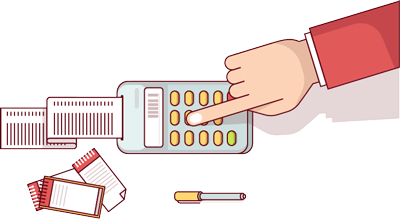Cooperation in B2B relationships
Cooperation in B2B relationships: Factors that influence customers'
perceptions of salesperson cooperation-
In business-to-business (B2B) selling, salespeople are entrusted with
acquiring and managing one of the organization's most important assets,
customers, with the purpose of building and maintaining longterm,
profitable relationships (Palmatier, Scheer, & Steenkamp, 2007).
To accomplish this, organizations have invested significant amount of
time and resources as> 3.6 million salespeople in the U.S. are involved
in B2B selling (Zoltners, Sinha, & Lorimer, 2008) which accounts for
approximately $22.7 trillion in 2016 (Skousen, 2016), more than the
U.S. gross domestic product (~$18.2 trillion).
Consequently, researchers have also been increasingly attentive to
the B2B selling context, mainly to understand the underlying mechanisms
and processes to build and maintain business relationships
(Palmatier, Dant, & Grewal, 2007). An important factor in the B2B
selling research stream is cooperation—[defined as the coordinated and
complementary actions between the partners in an exchange to achieve
mutual goals (Palmatier, Dant, Grewal, & Evans, 2006, p. 139]—given
its central role in building strong business relationships
(Anderson & Narus, 1990; Morgan & Hunt, 1994; Yen & Barnes, 2011).
Considering its importance to the practice and the literature, our research
investigates B2B relationships from the perspective of cooperation
between salespeople and their customers in order to better
understanding the process through which salesperson cooperation influences
business relationships.
Research on salesperson-customer cooperation indicates that cooperation
is a critical, if not the most important, factor for success in
relationships (Palmatier et al., 2006). This is significant because cooperation
can complement each firm's weaknesses and enhance its
strengths (Jap, 1999), thereby providing both firms with increased efficiency
and performance (Kim, Kim, Pae, & Yip, 2013). In fact, cooperation
leads to mutual outcomes (with expected reciprocation over
time) that exceed what one would achieve if each firm acted solely on
its own (Anderson & Narus, 1990). This is at least partially because a
cooperative salesperson—with his or her collaborative-focused approach—
can use complementary actions with his or her customers to
achieve mutual outcomes, with expected reciprocation over time.
In spite of the importance and promise of cooperation in B2B relationships,
empirical research in this area has lacked consistency.
Specifically, findings of results from salesperson-customer cooperation
on positive relationship outcomes have varied greatly, with effect sizes
ranging from 0.24 to 0.73. The lack of consistency in findings creates a
problem for managers to assess the true importance of how cooperation
impacts relationship outcomes. A possible cause for this lack of consistency
is that cooperation has been investigated from one side of the
relationship or the other, from customers or salespeople, but not from both (with one exception, Anderson & Narus, 1990). Even though cooperation
involves both parties, a dyadic perspective has also been
mostly overlooked in the literature. A dyadic approach will provide
insight on why and when cooperation reported by a salesperson or
perceived by the customer translates to positive outcomes. In our research,
we aim to address the inconsistent findings in prior literature by
disentangling views of cooperation from both the salesperson and
customer. In doing so, we explore why and when cooperation in B2B
selling impacts relationship outcomes.
ادامه مطلب









